Tunisian Synagogue Akko
September 4th 2014
No one knows exactly how many synagogues exist in Israel. There are certainly thousands. Even tens of thousands. And if you visited every one of them, you would never find another like the Tunisian Synagogue, located in the coastal city of Akko (also spelled Acco and Acre) in northern Israel.
In 1954, just a few years after the establishment of the State of Israel in 1948, a 1000+ year-old, four-story building was given to the Tunisian community of Akko. It had been used as a community center during the early years of the State. The Tunisian community turned the ancient building into a synagogue and named it Ohr Torah – the Light of Torah.
To decorate Ohr Torah, a decorative mosaic was ordered from Kibbutz Eilon in the Galilee. When it arrived, the synagogue leadership was so impressed with its magnificent beauty, they ordered another. And another. And another.
Akko resident Zion Badasche has been overseeing the mosaic project in the Tunisian Synagogue since 1955. Today, there is not a surface, not a floor, wall or ceiling that is not covered in a piece of mosaic artistry.
When you first enter the synagogue, you come into the Beit Midrash, the synagogue’s study hall, on the first floor. This is where weekday prayer services and daily Torah learning take place. It’s decorated primarily with images of birds and other animals, as well as ancient Jewish symbols such as a menorah, shofar, harp and other musical instruments that were used in the Holy Temples in Jerusalem.
Shabbat, holiday and special celebrations take place on the second floor, which houses the main sanctuary. Many of the 140 stained glass windows in the synagogue, each of which represents a major event in Jewish history or a well-known story from the Bible, are on the second floor. The mosaics in the main synagogue include signs of the zodiac and depictions of the Twelve Tribes of Israel.
The third floor hosts the women’s section and is decorated with mosaics of the Biblical foremothers and other important women in the Bible. On the fourth floor is a large, open space covered in mosaics that display Holocaust related themes. In fact, throughout the building as a whole, there are a total of 11 mosaics with Holocaust themes.
It’s easy to get overwhelmed by the sheer amount of mosaics in the synagogue. But don’t miss the symbolism in the synagogue’s structure. For example, the synagogue’s three entrances represent the three Jewish Patriarchs – Abraham, Isaac and Jacob. Additionally, the seven arks for Torah scrolls symbolize the Seven Gates of Heaven.











